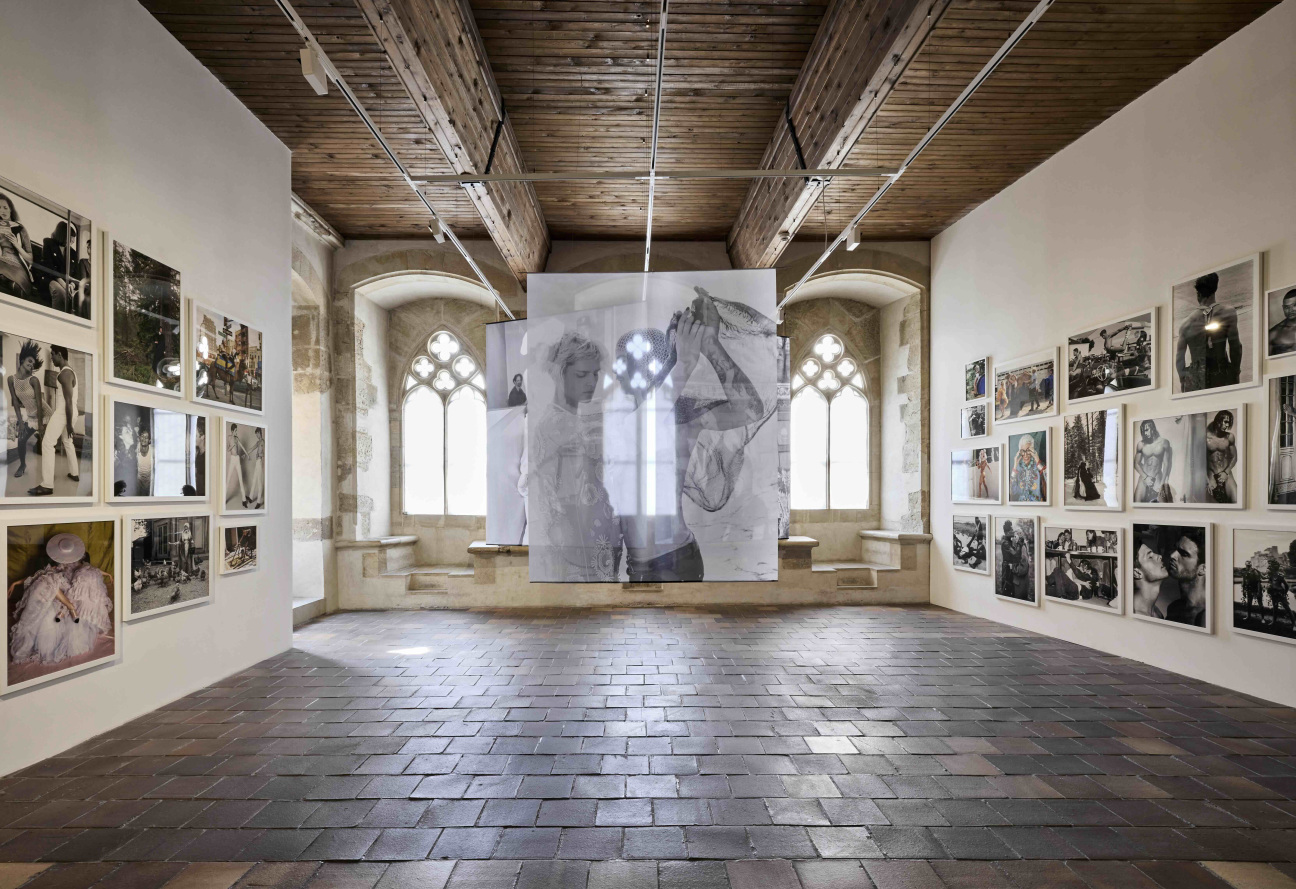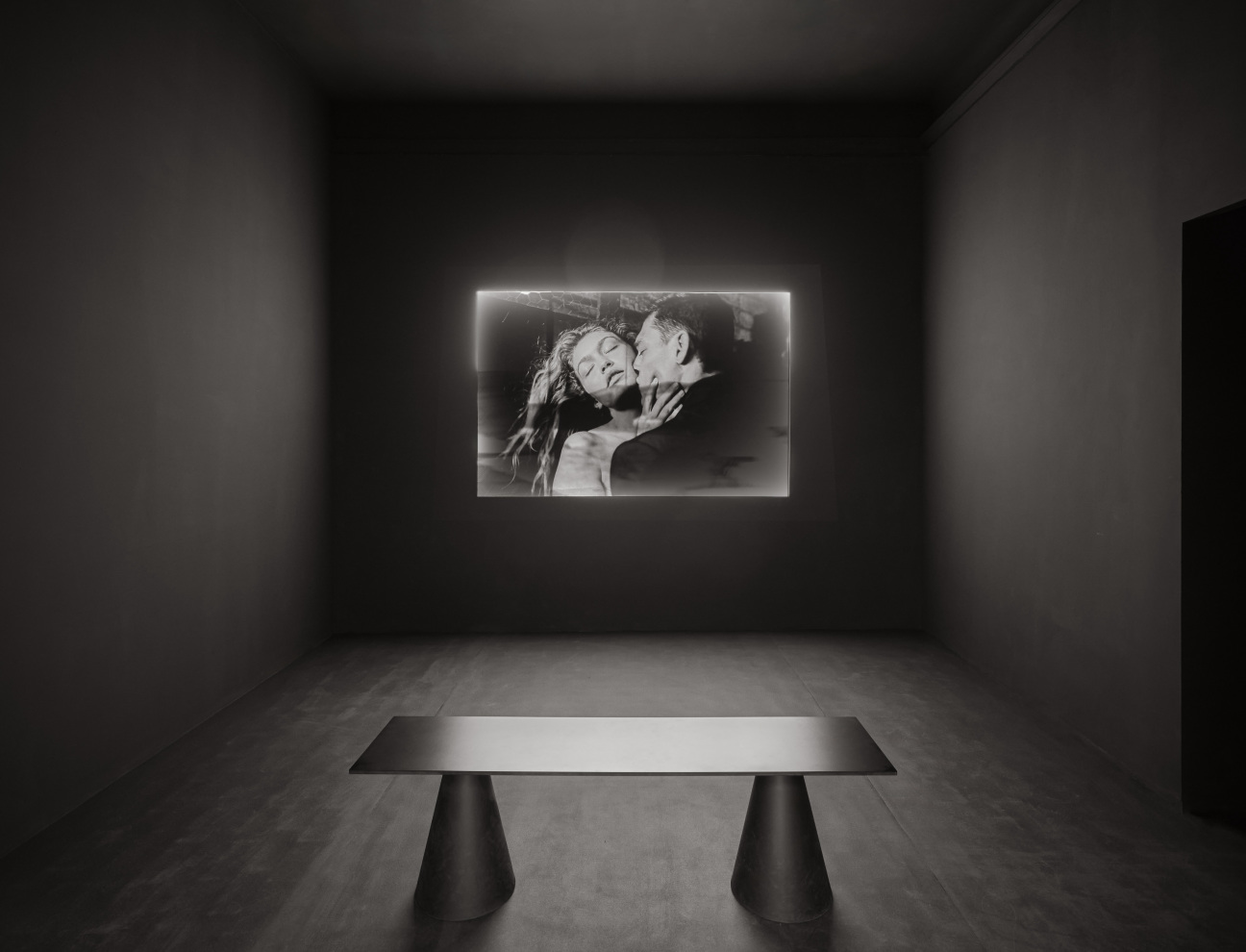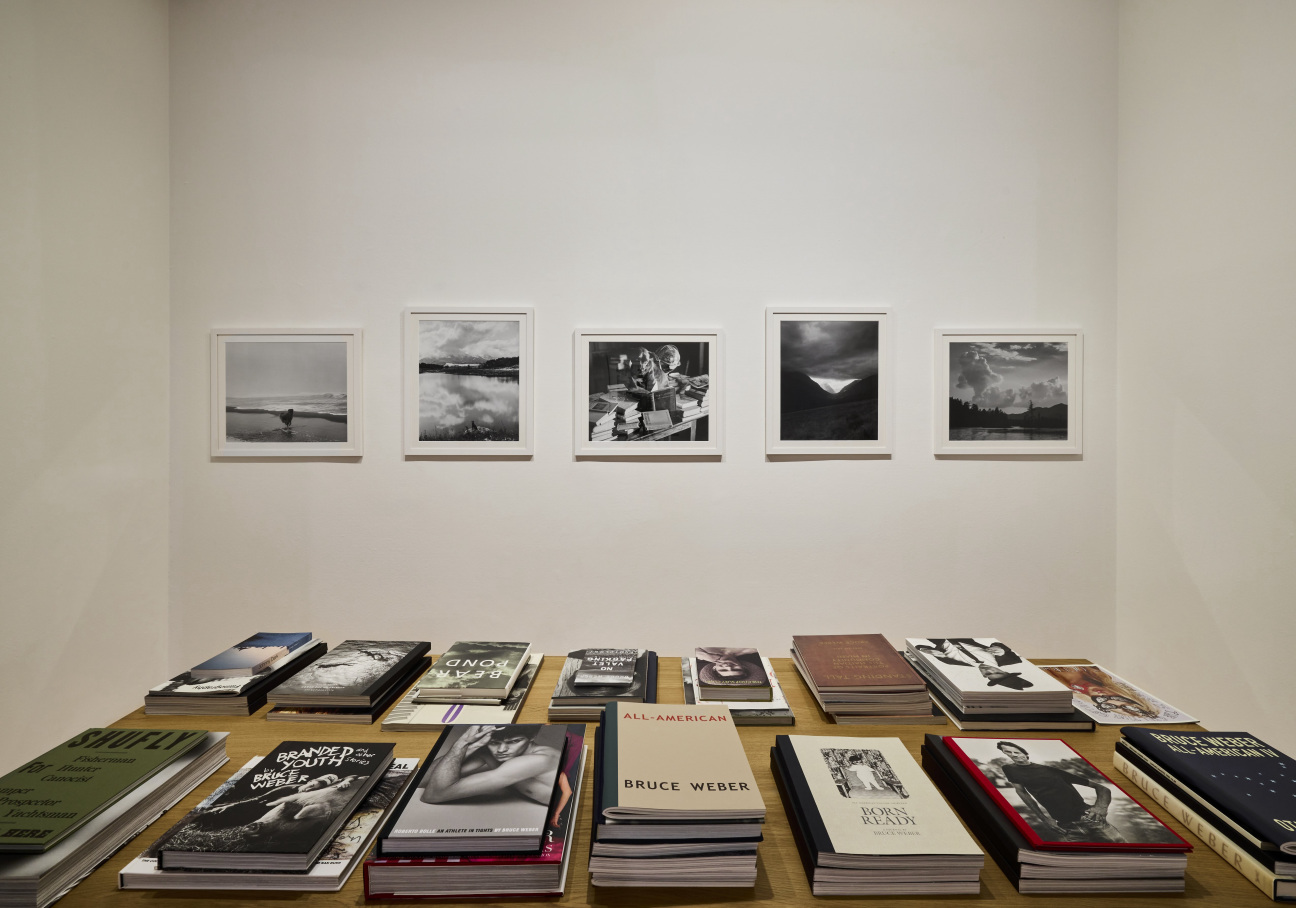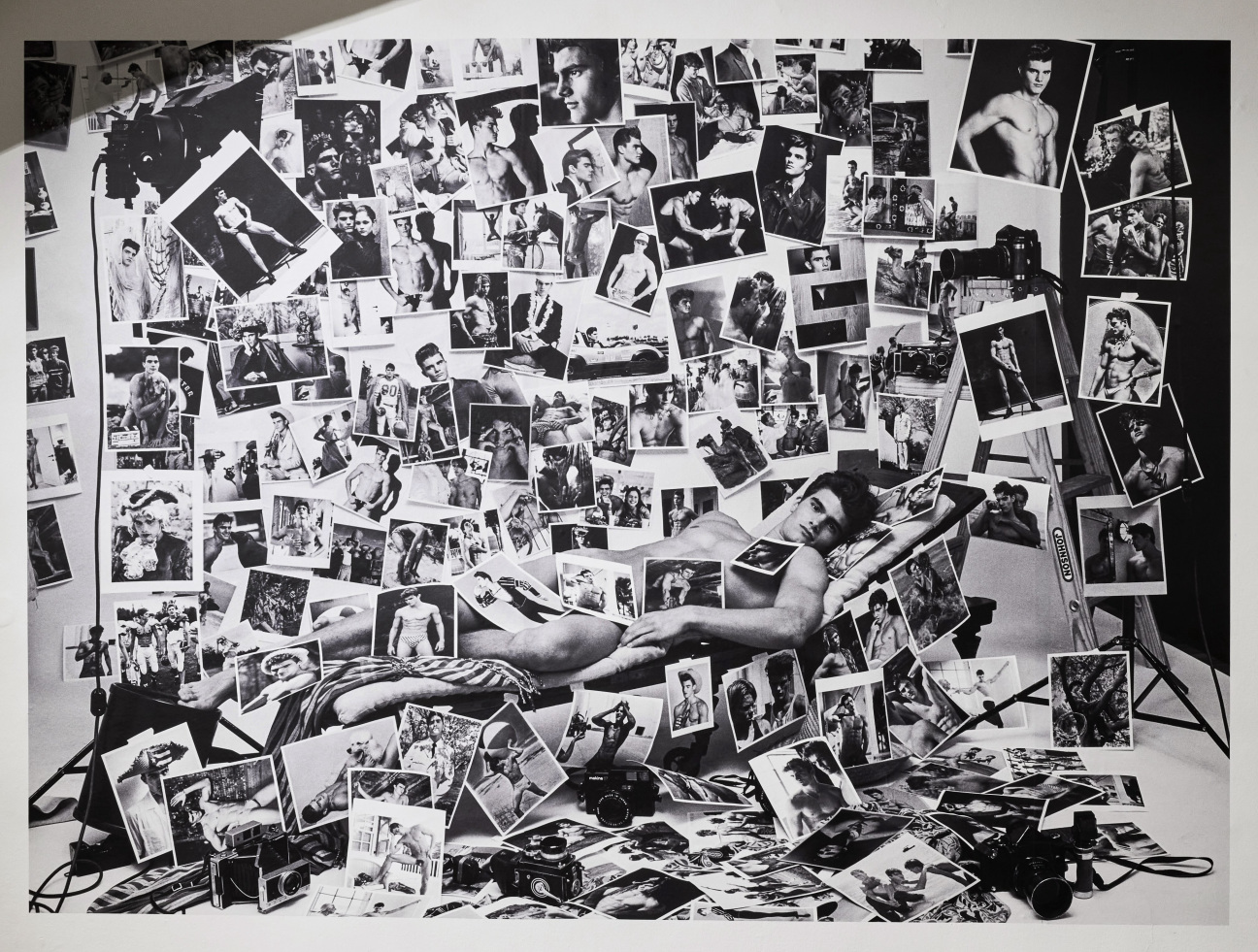
“Bruce Weber: My Education,” currently on view at the Prague City Gallery, is an invitation to see the work of one of photography’s most singular and enigmatic figures. With more than 400 pieces spanning photography, film, video, and immersive installation, the exhibition offers an expansive look at Weber’s diverse body of work, from his instantly recognizable fashion shots to intimate portraits, sweeping landscapes, sensual nudes, and, of course, animal photography.
This retrospective—which came to fruition with curation by Helena Musilova and Nathaniel Kilcer, production by Milosh Harajda and Marketa Tomkova, and design by Marek Cpin—is also about the journey behind the images. Here, Weber gives us a rare, personal glimpse into the evolution of his eye, which has shaped and challenged the photographic genre for more than 50 years. In conversation with CULTURED, the artist reflects on his storied career, the visuals that continue to inspire him, and the wisdom he got from Diane Arbus that he hopes to pass on to the next generation of image-makers.
CULTURED: Your work often induces a sense of intimacy and authenticity. How do you create genuine connections with your subjects?
Bruce Weber: To be perfectly honest, describing a photograph or the process behind it is not something that comes naturally to me. It diminishes the essence of whatever mysterious thing happens in the moment, but I’ll do my best. I think the key to establishing any connection with someone who I’m photographing is respect, first of all—and in many cases, a genuine belief in what they do, or represent, or create, or the life that they’ve led. The most important thing for me is curiosity. It doesn’t matter if someone I’m photographing is famous or a stranger I run into on the street. The impulse is the same—the most extraordinary thing might happen, so I’m always curious to see where the experience will take us.

CULTURED: After looking back through your archive for this show, how would you describe the evolution of your photographic style from your early work to today?
Weber: I never think for a second about my photographic style. Every day is a different day for me, as it is for every photographer. Back in 2015, I did a story on the incredible war photographer Lynsey Addario in All-American, an arts journal that Nan [Bush, Weber’s wife] and I publish each year. Lynsey is an amazing person—she visited our studio and spoke with us about her experiences. She was so charismatic and engaging—the whole experience was a thrill for all of us. In the years since, I’ve seen so many of her photographs in the New York Times, covering the wars in Ukraine and the Middle East and beyond. Her images show the awful intensity of war, but I also feel Lynsey’s presence in them. The fact is, she’s the one standing right there, experiencing it firsthand. For me, photography is not a question of style. It’s about the character of the person taking the picture.
CULTURED: Where do you find inspiration today?
Weber: I try to read a lot. I feel inspired when I read a poem or a book or an interesting article in the newspaper. We used to get LIFE Magazine when I was a kid, and it was so exciting when it would show up at our mailbox—the pictures of people, but also the way the writing led me into their worlds. I’m as hungry now as ever for inspiration and hope that I will be up to my last photograph.

CULTURED: Did you discover anything new about your work in the process of putting the show together?
Weber: As we worked, I just kept thinking, I have a lot to learn.
CULTURED: Why did now feel like it was the right time for a retrospective?
Weber: To be honest, I don't think of this exhibition as a retrospective—I think of it as a new beginning. It’s given me a chance to revisit photographs I've done of friends and people who I looked up to and had the good fortune to meet. But the whole experience left me feeling like there's so much more that I want to do—places to visit, people to meet, further discoveries to be made in the archive, even.
There’s one room in the exhibition filled entirely with figurative work I did in the late ’80s and early ’90s that became a book titled Bear Pond. One of my favorite photographs in that room shows a guy I knew named Claes under a picnic table with my dog, Little Bear. I found myself wondering what he was up to now, so we looked him up and it turns out he became a successful architect who splits his time between New York City and Sweden. We got together this summer and did some new photographs together, and it was really a trip. The journey of photography doesn’t ever end. As my friend Helmut Newton used to say, photographers are always taking the same picture. I think I agree with him. The details and light and circumstances might change, but it’s always the same person pushing the shutter.

CULTURED: Is there a lesson you've learned that you'd like to pass on, which has relevance to people working today?
Weber: As a photographer, it’s important to live with your own sense of doubt and a strong personal desire to try to answer the questions that you ask of yourself. I was fortunate to have a great teacher early on, Lisette Model at the New School. We often spoke of Diane Arbus, and I eventually got to know her as well.
Diane told me about meeting Eddie Carmel, the “Jewish giant” she photographed at home in the Bronx. I always loved that picture and thought it was a wonderful portrait. But Diane told me how Eddie and his parents kept calling her afterwards, and how she carried them with her long after the photo was taken. That experience and that image became part of their story and hers as well. I guess what I’d say to a young photographer is that you can’t ever really close the door.










 in your life?
in your life?

